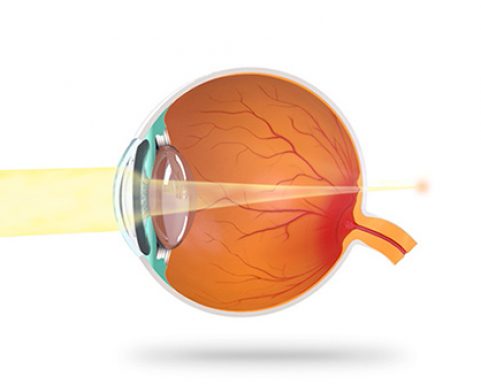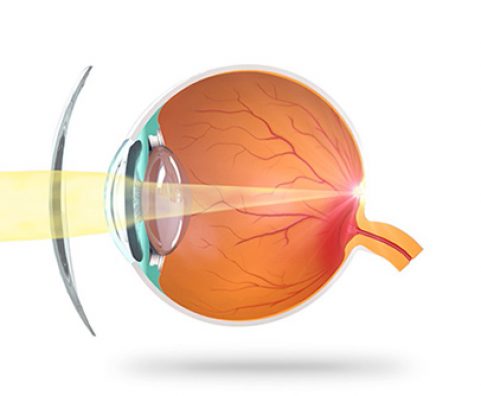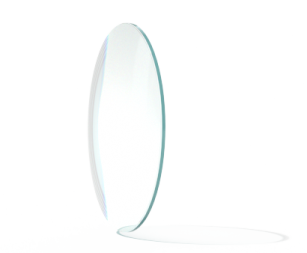Hyperopia
Once pictured
HYPEROPIA
Hyperopia affects 25.2% of the European population today. The disfunction that causes this visual impairment increases from age 40, when compensation through accommodation becomes more difficult. For children, overuse of accommodation from an early age can lead to be crossed-eyed. A farsighted person can see better from afar than near.

Hyperopia: Definition
When it comes to hyperopia, the eye is too short in reference to its refractive index, or its refractive index (ability to focus beams of light on a single point) is too weak in reference to its length.
As a result, the image of a distant object appears behind the retina and a farsighted person sees objects in the distance better than in the near, as near sight requires more accommodation and thus leads to eye fatigue over time.
Hyperopia is considered to be weak between +1.00 and +2.00 dpt, medium between +2.00 and +4.00 dpt, and strong above +4.00 dpt.
When it comes to hyperopia, the eye is too short in reference to its refractive index, or its refractive index (ability to focus beams of light on a single point) is too weak in reference to its length.
As a result, the image of a distant object appears behind the retina and a farsighted person sees objects in the
distance better than in the near, as near sight requires more accommodation and thus leads to eye fatigue over time.
Hyperopia is considered to be weak between +1.00 and +2.00 dpt, medium between +2.00 and +4.00 dpt, and strong above +4.00 dpt.
Hyperopia: Causes and symptoms
Hyperopia is hereditary in most cases.
Both children and adults compensate for weak hyperopia with accommodation. However, this ability to accommodate diminishes with age, which is why an increase in this impairment can be identified from the age of around 45.
Eye fatigue resulting from excessive accommodation can lead to headaches.


Coating and surface treatment
Hyperopia can be corrected with convex single vision lenses, which focus beams of light precisely on the retina to create a sharp image. The stronger the hyperopia, the thicker the lenses are in the middle. Precalibration, increased index and aspherical single vision lenses can ensure a thinner design that is lighter, more attractive and aesthetic.
The corresponding lens
A lens tailored to your specific visual impairment
THE MONOVID FREE-FORM SINGLE VISION LENS

A combination of precision and lightness.
